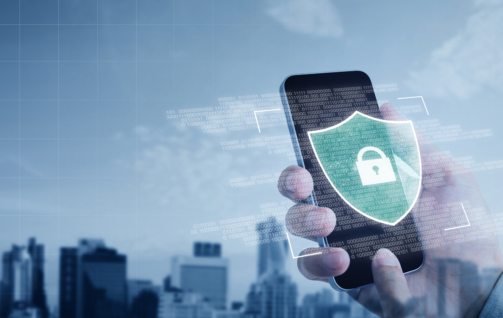Cyberattacks not only cause hefty financial losses but they also tend to cause businesses to lose the trust and loyalty they have spent years and millions of dollars building. And while every business, big or small, does its best to secure itself from cyberattacks, in the event that there is a breach of customer data and information leaks, consumers are going to automatically voice their disdain and distrust of the business entity.
As per 2022 reports by the Federal Bureau of Investigation’s Internet Crime Report, malicious online attacks resulted in losses amounting to more than $10 billion. Since then, however, businesses have continued to lose money and customers because of unrelenting cybercrime and attacks.
Just as how internet and data security and countermeasures continue to evolve and become more sophisticated, at the other end of the spectrum, you can expect that cybercriminals are equipping themselves with just as complex and cutting-edge tools to commit sophisticated cyberattacks.
There are a variety of factors that can be attributed to the growing amount of cybercrime throughout the world. For instance, due to continuously increasing labor costs, costs of equipment, and resources being expensive and limited, it is safe to assume that a lot of businesses, especially startups and medium-sized businesses may neglect to adequately secure themselves with the latest cybersecurity countermeasures.
Due to budgetary constraints and a lack of skilled IT professionals in the modern labor markets, many businesses are falling prey to complex cyberattacks and threats. On a much wider scale, though, the constant geopolitical tensions across nations can also be a profound reason why top-notch businesses are seeing a rise in cybercrime.
In light of this, we’re going to take a deep dive into understanding what cyberattacks are, what cybercriminals mainly target, the types of cyberattacks that businesses frequently encounter, and what you can do to protect yourselves against such attacks.
Understanding the Nature of a Cyberattack in a Nutshell
Cybercriminals, mainly hackers, phishing scammers, ransomware, and malware installers commit sophisticated online attacks that are mainly to achieve certain targets.
For example, these criminals mainly attempt to breach into a company’s database to steal mission-critical information data (which they can sell to the highest bidder), destroy data (which can be associated with corporate espionage), alter information and date, or steal sensitive and personal information of customers.
Cyberattacks can be broadly categorized as being either internal or external threats. Threats stemming from within a company are mainly carried out by malicious employees who have access to the organization’s sensitive data.
They use their login credentials to exploit potential vulnerabilities within the company’s network infrastructure. Insider attacks are mainly carried out by individuals engaged in corporate espionage or a disgruntled contractor or employee.
On the other hand, an external cyberattack is carried out by an individual or a group of individuals not associated with any company. They mainly steal or breach critical data to sell on the dark web or use the personal information of employees or customers to commit further online crimes such as stealing their money or committing identity thefts.
What are the Primary Targets of Cybercriminals?
It is very typical for cybercriminals to carry out attacks on companies that have the most valuable data or comprise highly personalized information of employees or customers. Some of the most common industries that have to tackle cybercrime include finance, healthcare, non-profits, education, and governmental entities.Â
However, in recent years it is said that there has been a surge in cyberattacks on healthcare businesses because it has a bigger volume of personal information in the form of patient records. Because of the sensitive nature of the information stored by healthcare companies, they are more likely to quickly comply with the demands of malicious attackers.
On the other hand, hackers and cybercriminals also attempt to carry out widespread malware attacks and breaches on government companies as they also store highly valuable and confidential information such as social security numbers, contact information, names, addresses, etc.
Non-profit companies are also susceptible to a high frequency of attacks as they store classified information about a variety of donors, which could be individual donors or corporate entities. Similarly, financial institutions such as banks and insurance organizations store the personal information of their customers, making them a soft target for extortion.
List of Some of the Most Typical Cyberattacks
1.    DoS Attacks (Denial-of-Service)
This is one of the more dangerous and crippling attacks cybercriminals use to completely disable a company’s entire operating system by flooding the infrastructure with a staggering volume of traffic, making it difficult for the system to compute each request. This ultimately causes the server or system to crash.
DoS attacks are rarely associated with a monetary gain from the company under attack. Instead, the intention is either corporate espionage or hackers are paid by a third-party entity to commit an attack as it can take considerable time and finances for the victim to set up again.
2.    Password Breaching
This type of cyberattack happens when perpetrators attempt to access your device or database by either guessing what your password is or using illegal tools, software, or methods such as keylogging to breach your computer.
Keylogging allows hackers to track the nature of information you access on your device thereby helping them identify your passwords and taking control of your computer.
Often, password attacks are carried out using phishing strategies where a malicious individual infiltrates your system using a suspicious file, email, or a trusted vendor or website, fooling the user into providing the attacker with their username and password.Â
3.    Phishing Attacks
Phishing attacks essentially comprise an unknowing individual clicking on a suspicious yet convincing email. The email comprises spyware software, which once the person clicks on the link and follows the instructions therein, allows the attackers to take control of their device, illegitimately accessing the person’s sensitive information such as their banking information, social security documents, etc.
4.    Backdoor Trojan Attacks
These attacks consist of sophisticated viruses and malware programs that can secretly or discerningly install themselves on an unsuspecting user’s device. Once activated, the Trojan virus acts as a backdoor for the cybercriminal, who then gains control of the user’s computer, hijacking the entire system and holding the person hostage for financial exploitation and extortion.
5.    Infiltrating via an IoT Attack (Internet of Things)
IoT cyberattacks may also be on the rise due to the nature of everyday devices and applications that we use to make our lives easier. You see, modern technology comprises sophisticated communication channels that bounce between one server to the server, which is what allows an individual to control multiple IoT functionalities with a click of a button.
However, this also makes the system very vulnerable to a malware attack. Due to not having stronger security protocols, hackers can attempt to breach one end of the IoT communication protocol and carry out a large-scale attack.
6.    Malware Attacks
In a malware attack, cybercriminals systematically infect corporate servers and databases with malicious software, viruses, ransomware, or spyware (all of which come under the malware umbrella), to achieve a successful breach into the company’s network infrastructure.
As soon as an unsuspecting employee clicks on a malicious email, web link, or any unknown file attachment, the malware automatically installs itself, allowing the cyberattackers to gain access to that employee’s computer and by extension, the organization’s database.
7.    Ransomware
As the name suggests, ransomware attacks allow cybercriminals to discreetly install malware onto your device after you unknowingly click on a suspicious link, online ad, or email. It allows criminals to take complete control of your device, keeping you completely locked out. This means you will not be able to use the device until you comply with the attackers and pay them the ransom demanded.
But what’s equally scary about ransomware attacks is there is a very high possibility that you may not get control of your device even after paying the ransom as they may change they may lie and keep demanding more money.Â
Some Important Tips for Securing Yourself from Cyberattacks
Before learning the tips on how you can prevent cybercrime in your organization, one of the most important elements building up to it is the fact that your employees should understand the potential of a cyber threat, how common they are, and how susceptible anyone can be to any one of the attacks we have listed above. So, the first step is to always be mindful before you access a website or click on a suspicious email or link.
Implement a Proprietary Firewall
While firewalls come built into computer systems, there are third-party software that provide a comprehensive list of security features. Firewalls, in general, are very powerful anti-malware and anti-virus security systems that help monitor your network traffic, proactively identifying and preventing potential threats and attacks.
Make Back Ups of Your Data
One of the best things to prevent data loss due to a cyberattack is to make multiple copies of it and store each copy in a secure location, such as a cloud system.
Bottom Line
So there you have it, a comprehensive look into different types of cyberattacks and what you can do to protect yourself and your company.Â





